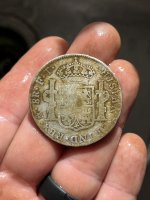Smithbrown
Bronze Member
- May 22, 2006
- 1,002
- 834
I am more curious about the " few small factoids". Do you really have proof that the" Templars in Scotland lived and worked among the Scottish Norse population" or that the "Scottish Norse knew the way to what would become the Canadian shore"? All this while claiming you can dismiss all of the archives of the countries and institutions of the Mediterrean. Do you really think there are no gaps in these documents?



